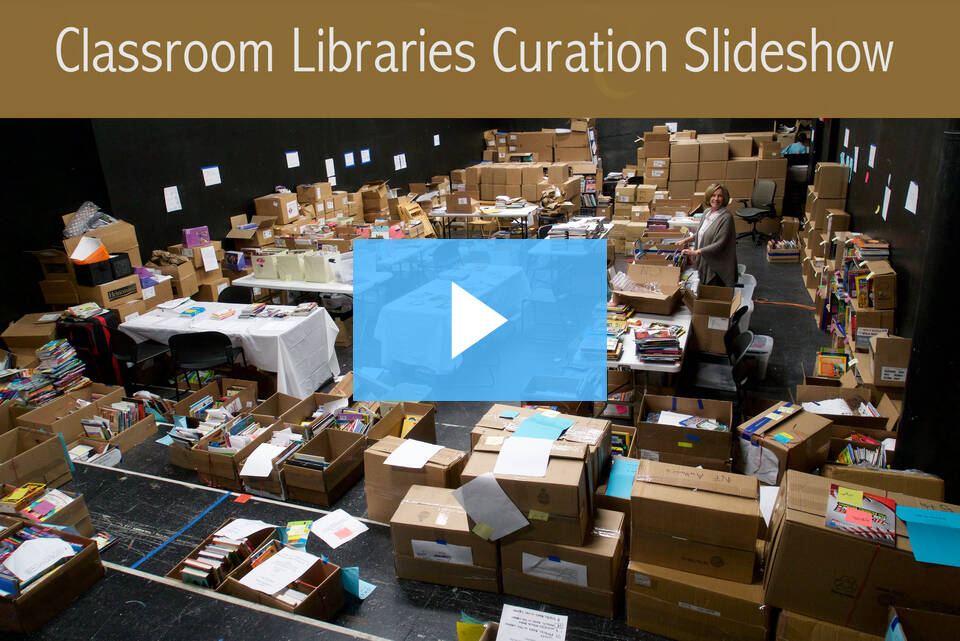The Power of a Great Classroom Library
Kids who have access to great books become readers. There is simply nothing that makes teaching reading easier, that gets kids reading with tremendous volume, or that lifts reading skills higher than a collection of truly fabulous books.
The Reading & Writing Project has developed state-of-the-art classroom libraries for each grade level, K–8. Curated by Lucy Calkins and colleagues along with a team of literacy leaders and children’s literature experts, these libraries contain 400–700 leveled books at each grade level—all organized into collections and shelves based on level, genre, topic, and available in versions for students reading both at and below benchmark.
About the Classroom Libraries
As the team worked to develop these libraries, several key ideas guided the selection process:
- The libraries aim to introduce as many authors and titles as possible, with books selected for high interest, richness (books that can be mined again and again), and quality of writing and content.
- The libraries include some all-star classics, but also many of the newest cutting-edge titles.
- To ensure all students have access to high-quality, high-interest books, libraries for students reading significantly below benchmark are available for grades 1–8.
- A helpful Guide (K–2, 3–5, 6–8) and a set of grade-specific tools help teachers organize the books and make them inviting and accessible to children.



A Note About the Middle School Upper-Grade Libraries: Please know that the titles in the Classroom Libraries were evaluated and recommended by educators and librarians from across the country and around the world, and reviewed and vetted by the country’s leading experts in children’s literacy and literature. Titles were chosen for their high-interest topics, rich literary qualities, and strong potential to develop critical thinking.
Because the upper-grades libraries include many contemporary YA titles, some of the fiction titles contain very strong language, themes involving death, coming of age (including sexual themes), peer pressure, and similar mature content. We believe the literary merit of these titles warrants their inclusion in our libraries. To ensure your students are exploring content that matches what you understand to be their social and emotional development, you may wish to review titles before introducing them to students. Please note that substitute titles are not available.
Please note: These classroom Libraries are not available for sale or distribution outside of the U.S.
Frequently Asked Questions
The following videos and links to other resources contain responses from Lucy and her colleagues addressing key frequently asked questions. Watch the videos below to see what Lucy has to say about these special libraries and learn how best to use the libraries to create successful, lifelong readers.
Overview
- What makes the Classroom Libraries special? (4:14) / Transcript PDF
- What inspired the Libraries project? (2:34) / Transcript PDF
- How were the Libraries developed? (4:49) / Transcript PDF
- What criteria were used in the curation of the various Library Shelves? (7:14) / Transcript PDF
Curation Process
- What criteria were used in the curation of the various Library Shelves? (7:14) / Transcript PDF
- How were the books in the primary Libraries selected? (7:46) / Transcript PDF
- How were the books in the middle grades Libraries selected? (8:51) / Transcript PDF
Meeting the Needs of All Learners
- What do teachers need to know about the Below Benchmark Libraries? (2:12) / Transcript PDF
- What are some of the ways Classroom Libraries meet the needs of diverse learners? (1:55) / Transcript PDF
Reading Levels
Download the Shelf-by-Shelf Reading Levels, K-8
Download the Additional Shelf Reading Levels
Tools for Management and Student Engagement
- How can I best organize my classroom libraries right out of the box? (Unboxing Video)
- What kinds of information will I find in the Guides to the Classroom Libraries? (1:38) / Transcript PDF
- What are some of the ways the Classroom Libraries help teachers engage kids in reading? (2:49) / Transcript PDF
Tips for Building Your Library
- What do Units of Study users need to consider as they select Libraries and Library Shelves? (1:50) / Transcript PDF
- Why are there some additional Shelves that are not in the core Libraries? (2:11) / Transcript PDF
- How should educators make choices among Library Shelves if they already have great classroom libraries or if they need to build their Libraries over time? (1:36) / Transcript PDF
Tools and Resources
Included with each complete library or available for separate purchase (with a minimum of two Individual Library Shelves) are box sets of Tools and Resources. These invaluable resources will help you use your library more effectively to lift the level of student achievement and engage kids.
Each grade-level Tools and Resources pack includes:
Reading-Level Ranges...
Download the Shelf-by-Shelf Reading Levels, K-8
Download the Additional Shelf Reading Levels









